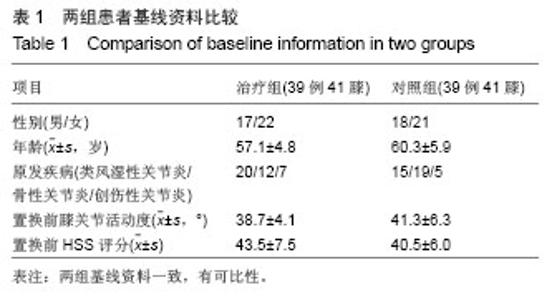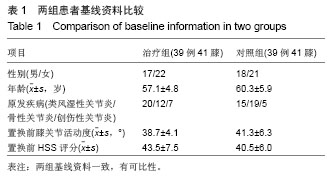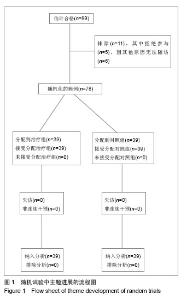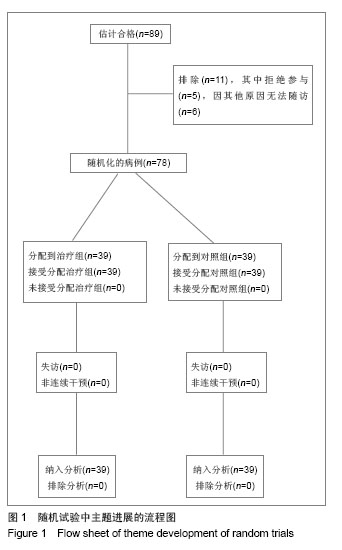| [1]Rajgopal A, Ahuja N, Dolai B.Total knee arthroplasty in stiff and ankylosed knees.J Arthroplasty. 2005;20(5):585-590.[2]吕厚山.人工膝关节置换术的进展和现状[J].中华外科杂志,2004, 42(1):30-33.[3]Busch CA, Shore BJ, Bhandari R,et al. Efficacy of periarticular multimodal drug injection in total knee arthroplasty. A randomized trial.J Bone Joint Surg Am. 2006; 88(5):959-963. [4]吴星火,杨述华.微创全膝关节置换术的研究进展[J].中华骨科杂志, 2006,26(4):275-277. [5]姚琦,王继芳.微创全膝关节置换术的研究现状[J].中国矫形外科杂志,2007,15(7):522-524.[6]崔俊成,王万年.微创全膝关节置换术研究进展[J].临床骨科杂志, 2007,10(1):92-94.[7]张民,卫小春.人工膝关节置换手术入路介绍(一) [J].实用骨科杂志,2007,13(1):37-38.[8]刘军,孙振辉,田峥巍,等.股内侧肌下入路全膝关节置换术初步观察研究[J].中国矫形外科杂志,2008,16(9):649-652.[9]曹学伟,张迪晖,杨伟毅,等.股四头肌保留入路全膝关节置换术的早期临床疗效观察[J].实用医学杂志,2012,28(15):2540- 2542. [10]Weinrauch P, Myers N, Wilkinson M,et al. Comparison of early postoperative rehabilitation outcome following total knee arthroplasty using different surgical approaches and instrumentation.J Orthop Surg (Hong Kong). 2006;14(1): 47-52.[11]周殿阁,张斌,寇伯龙,等.膝外翻全膝关节置换外侧髌旁入路的手术方法探讨[J].中华医学杂志,2007,87(27):1885-1889. [12]Aglietti P, Lup D, Cuomo P,et al.Total knee arthroplasty using a pie-crusting technique for valgus deformity.Clin Orthop Relat Res. 2007;464:73-77. [13]Dalury DF, Dennis DA.Mini-incision total knee arthroplasty can increase risk of component malalignment.Clin Orthop Relat Res. 2005;440:77-81.[14]施桂英.关节炎概要[M].北京:中国医药科技出版社,2004: 441-443.[15]陈红云,陈丽宜,贾晗.股内侧肌入路全膝关节置换术后主动功能锻炼的临床研究[J].实用医学杂志,2012,28(15):2621- 2622. [16]Kolisek FR, Bonutti PM, Hozack WJ,et al.Clinical experience using a minimally invasive surgical approach for total knee arthroplasty: early results of a prospective randomized study compared to a standard approach.J Arthroplasty. 2007;22(1): 8-13. [17]宋兵华,孙俊英,石岩,等.小切口股内侧与髌旁内侧入路行全膝置换术的比较研究[J].中国矫形外科杂志,2008,16(7):488- 491.[18]Aglietti P, Baldini A, Sensi L.Quadriceps-sparing versus mini-subvastus approach in total knee arthroplasty.Clin Orthop Relat Res. 2006;452:106-111.[19]徐应龙,赵劲民,李书振.全膝关节置换术股内侧肌入路与内侧髌旁入路比较的系统评价[J].中国循证医学杂志,2010, 10(5): 585-591.[20]Lombardi AV Jr, Viacava AJ, Berend KR.Rapid recovery protocols and minimally invasive surgery help achieve high knee flexion.Clin Orthop Relat Res. 2006;452:117-122. [21]Niki Y, Mochizuki T, Momohara S,et al. Is minimally invasive surgery in total knee arthroplasty really minimally invasive surgery. J Arthroplasty. 2009;24(4):499-504. [22]孙俊英,汪强,马良波,等.经小切口股内侧肌入路与小切口髌骨内侧旁入路行全膝关节置换术比较的临床研究[J].中华关节外科杂志,2008,2(3):274-279.[23]Hernandez-Vaquero D, Noriega-Fernandez A, Suarez- Vazquez A.Total knee arthroplasties performed with a mini-incision or a standard incision. Similar results at six months follow-up.BMC Musculoskelet Disord. 2010; 11: 27. [24]Tria AJ Jr. Minimally invasive total knee arthroplasty: the importance of instrumentation.Orthop Clin North Am. 2004; 35(2):227-334.[25]Bonutti PM, Mont MA, Kester MA. Minimally invasive total knee arthroplasty: a 10-feature evolutionary approach.Orthop Clin North Am. 2004;35(2):217-226.[26]Callaghan MJ,Babu VL,Ellis DJ,et al.Electromyographic comparison of the mid-vastus and sub-vastus approaches to total knee arthroplasty.Current Orthopaedic Practice. 2009; 20(4):442-447.[27]符培亮,李晓华,吴宇黎,等.初次全膝关节置换股内侧肌中间入路与内侧髌旁入路置入假体的优势对比[J].中国组织工程研究与临床康复,2008,12(9):1793-1796.[28]Maru M, Akra G, McMurtry I, et al. A prospective comparative study of the midvastus and medial parapatellar approaches for total knee arthroplasty in the early postoperative period. Eur J Orthop Surg Traumatol. 2012; 19(7):473-476. [29]Bourke MG, Buttrum PJ, Fitzpatrick PL,et al.Systematic review of medial parapatellar and subvastus approaches in total knee arthroplasty.J Arthroplasty. 2010;25(5):728-734. [30]Rosenberg AG, Jacobs JJ, Saleh KJ,et al.The patella in revision total knee arthroplasty.J Bone Joint Surg Am. 2003; 85-A Suppl 1:S63-70.[31]DeFrances CJ, Lucas CA, Buie VC,et al. 2006 National Hospital Discharge Survey. Natl Health Stat Report. 2008; (5):1-20. [32]Massin P, Gournay A.Optimization of the posterior condylar offset, tibial slope, and condylar roll-back in total knee arthroplasty.J Arthroplasty. 2006;21(6):889-896.[33]Hanratty BM, Thompson NW, Wilson RK,et al.The influence of posterior condylar offset on knee flexion after total knee replacement using a cruciate-sacrificing mobile-bearing implant.J Bone Joint Surg Br. 2007;89(7):915-918. [34]Boldt JG, Stiehl JB, Hodler J,et al.Femoral component rotation and arthrofibrosis following mobile-bearing total knee arthroplasty. Int Orthop. 2006;30(5):420-425. [35]Mihalko W, Fishkin Z, Krackow K.Patellofemoral overstuff and its relationship to flexion after total knee arthroplasty.Clin Orthop Relat Res. 2006;449:283-287.[36]Laskin RS, Beksac B.Stiffness after total knee arthroplasty.J Arthroplasty. 2004;19(4 Suppl 1):41-46. [37]In Y, Kim JM, Choi NY,et al. Large thigh girth is a relative contraindication for the subvastus approach in primary total knee arthroplasty.J Arthroplasty. 2007;22(4):569-573. [38]Matsuda Y, Ishii Y, Noguchi H,et al.Varus-valgus balance and range of movement after total knee arthroplasty.J Bone Joint Surg Br. 2005;87(6):804-808.[39]Dennis DA, Komistek RD, Mahfouz MR,et al. Multicenter determination of in vivo kinematics after total knee arthroplasty.Clin Orthop Relat Res. 2003;(416):37-57.[40]Schurman DJ, Rojer DE.Total knee arthroplasty: range of motion across five systems.Clin Orthop Relat Res. 2005; (430):132-137. [41]Kelly MJ, Rumi MN, Kothari M,et al. Comparison of the vastus-splitting and median parapatellar approaches for primary total knee arthroplasty: a prospective, randomized study.J Bone Joint Surg Am. 2006;88(4):715-720.[42]耿磊,陈继营,陈城,等.全膝关节置换术两种入路效果比较[J].武警医学,2012,23(5): 373-374.[43]Bäthis H, Perlick L, Blum C, et al.Midvastus approach in total knee arthroplasty: a randomized, double-blinded study on early rehabilitation.Knee Surg Sports Traumatol Arthrosc. 2005; 13(7):545-550. [44]Song MH, Kim BH, Ahn SJ,et al. Comparison of midvastus and medial parapatellar approach for total knee arthroplasty. J Korean Orthop Assoc. 2005;40:902-927. [45]徐杰,刘春华,周仕国,等.全膝关节置换:股内侧肌下与内侧髌旁入路的比较[J].中国组织工程研究,2013, 17(35):6240- 6246.[46]Cohen RG.Primer on minimally invasive subvastus total Knee arthroplnsty.Operative Techniques in Orthopaedics. 2006;16:136-144.[47]冯灿林,黎泽森,黎霭云,等.膝关节置换在膝关节内翻畸形中的应用研究[J].重庆医学,2013,42(11):1229-1230.[48]畅怡,周殿阁.初次全膝关节置换术中韧带加强技术的应用[J].中华医学杂志,2009,89(21):113-115.[49]符培亮,李晓华,吴宇黎,等.股内侧肌中间入路与内侧髌旁入路在初次全膝关节置换中的对比研究[J].中华创伤骨科杂志,2007, 9(8):752-755.[50]Jung WH, Ha YC, Cha MS. A comparison of the midvastus and median parapatellar surgical approaches in total knee arthroplasty. J Korean Orthop Assoc. 2007;42:354-359. [51]符培亮,李晓华,吴宇黎,等.初次全膝关节置换股内侧肌中间入路与内侧髌旁入路置入假体的优势对比[J].中国组织工程研究与临床康复,2008,12(9):1793-1796.[52]Dalury DF, Snow RG, Adams MJ. Electromyographic evaluation of the midvastus approach.J Arthroplasty. 2008; 23(1):136-140. [53]Walter F, Haynes MB, Markel DC.A randomized prospective study evaluating the effect of patellar eversion on the early functional outcomes in primary total knee arthroplasty.J Arthroplasty. 2007;22(4):509-514. [54]Mukherjee P, Press J, Hockings M.Mid-vastus vs medial para-patellar approach in total knee replacement--time to discharge.Iowa Orthop J. 2009;29:19-22. |





